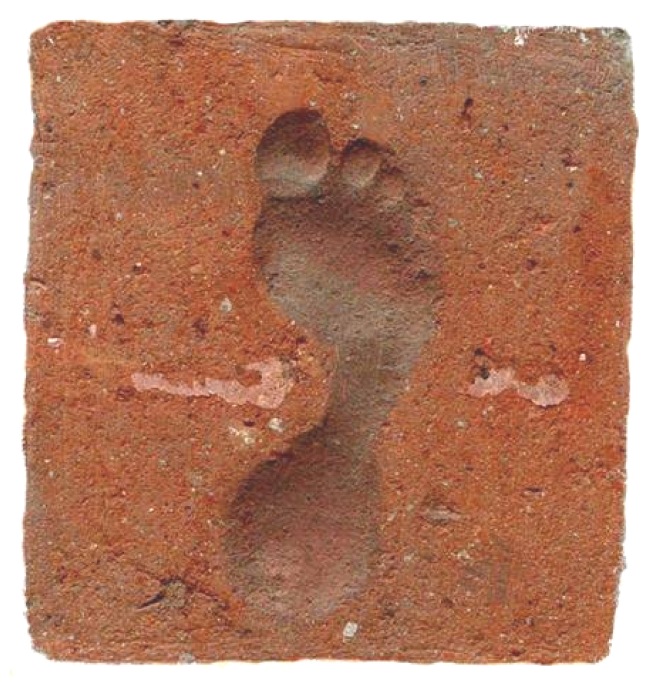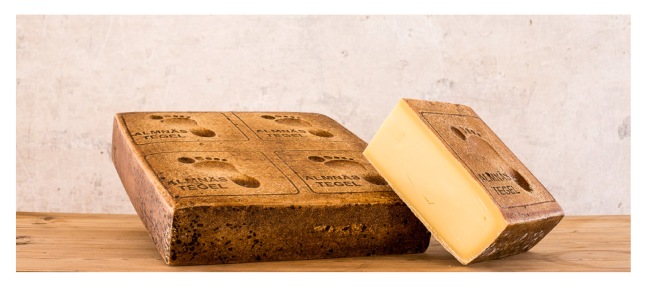Made in Almnäs Bruk, in between Gothenburg and Stockholm.
“The Almnäs Tegel is made out of the milk from our own herd consisting mainly of Holstein cows but also some of the Swedish red breeds and a lovely spotted one from the north.” said Thomas Nolberger, assistant to Elizabeth Andersson, the cheese maker.
The Tegel is made out of a mix of evening milk and morning milk. The evening milk is chilled only to 15 C° and with the morning milk unchilled on top, the milk arrives at the dairy at a temperature of about 23 – 25 C°. This means that the mesophilic bacteria has ample time to cut the casein into aminoacids and then on to amines to set free the aromas.
The curd is cut very fine to the size of a green pea. Afterwards the temperature is slowly raised to 51C° while slowly stirring. Then the curd is filled into the moulds, the plastic mould with the childrens footprints put on top and into the presses.
The cheese remains under very high pressure until the next morning after which it is put in the brine pool for 48 hours.
It is then washed in brine for 10 consecutive days. We normally start with the older ones to “contaminate” the young cheese with their bacterial flora. Later on the washing is reduced to 3 times a week, then 2 times a week, then once a week and then finally, oh glorious day, when needed. When the Tegel leaves Almnäs at age 24 months it has been turned and washed hundreds of times.
The Tegel is inspired by the production of bricks that started in 1750 when the manor was built and continued on up until 1976. In the beginning the bricks were made by manually putting clay into wooden moulds and then put out in the yard to dry before burning them in the furnace. The children, playing out in the yard, would run over them and their footprints were caught in the clay. This we can still be seen in the attic where there is a brick floor with many trapped footprints.
Our cheese is hard cooked pressed, its making is very similar to a grana, meaning grain, in relation with its grainy texture. Matured for 24 months so it has lost a lot of its humidity which makes for a rather dense cheese, somewhat like parmigiano reggiano but sweeter!
How would i enjoy it? Crumbed, a few slices of saucisson, and a glass of sauternes
